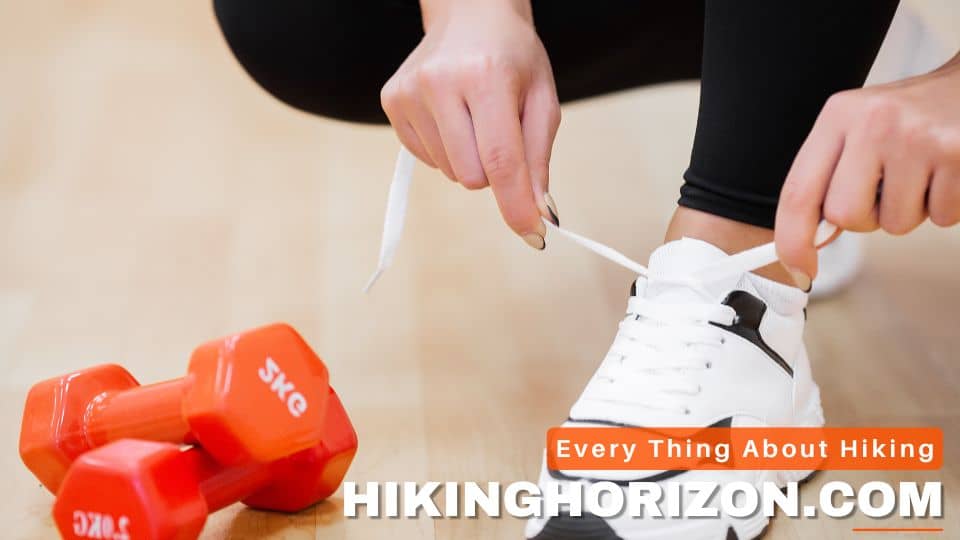
As the fitness world keeps progressing, people are constantly seeking ways to enhance their workout routines. One recent trend has been the use of hiking shoes in the gym. Hiking shoes are designed for rough terrain, but Can Hiking Shoes Be Used in the gym? The simple answer is yes. Some people believe hiking shoes offer advantages for indoor workouts as well.
Using hiking shoes in the gym can have its benefits and drawbacks. While they offer support, durability, and ankle support for weightlifting and high-impact exercises, they may not be suitable for exercises that require a lot of flexibility or cardio activities. It’s important to consider your workout routine and choose the appropriate footwear accordingly.
In this article, we’ll delve into the advantages and disadvantages of wearing hiking shoes in the gym, hear what experts say about their suitability for gym workouts and compare them to other types of footwear commonly used in the gym.
Table of Contents
Can Hiking Shoes Be Used in the Gym?

Before we delve into the answer to this question, let’s examine the characteristics of hiking shoes and gym shoes and discuss whether utilizing hiking shoes for gym workouts is a
Hiking Shoes
Hiking shoes are designed specifically for outdoor activities like hiking and trekking. They provide support, protection, and traction on uneven terrain and varying weather conditions.
Features of hiking shoes
- Grip and Traction: Hiking shoes have aggressive treads and sticky rubber soles to ensure a strong grip on various surfaces.
- Support and Stability: These shoes often feature a reinforced shank and ankle support to prevent injuries.
- Cushioning and Comfort: Hiking shoes have thick, cushioned midsoles for shock absorption and comfort during long hikes.
- Durability and Protection: They are sturdy and often have toe caps and heel guards for added protection.
Gym Shoes
Gym shoes, also known as athletic or sports shoes, are designed for indoor activities and various workouts, such as weightlifting, cardio exercises, and group fitness classes.
Features of gym shoes
- Grip and Traction: Gym shoes have non-marking, flat soles that provide traction on gym floors.
- Support and Stability: These shoes offer adequate arch support and stability for lateral movements.
- Cushioning and Comfort: Gym shoes have lightweight cushioning for comfort during high-impact exercises.
- Breathability: They are made of breathable materials to keep feet cool during workouts.
Comparing Hiking and Gym Shoes

Grip and Traction
Hiking shoes have aggressive treads and sticky rubber soles for outdoor use, while gym shoes have non-marking, flat soles suitable for indoor surfaces.
Support and Stability
Hiking shoes prioritize ankle support and protection for uneven terrain, while gym shoes focus on arch support and stability for lateral movements.
Cushioning and Comfort
Hiking shoes have thick, cushioned midsoles for shock absorption, while gym shoes provide lightweight cushioning for high-impact exercises.
Breathability
Gym shoes are generally more breathable than hiking shoes, designed for indoor use and high-intensity workouts.
The Advantages of Wearing Hiking Shoes in the Gym

When exercising, most people assume that any pair of sneakers will do the trick. However, wearing the right shoes can make a significant difference in the effectiveness of your workout. Hiking shoes, in particular, offer a range of benefits that can enhance your gym experience.
Improved Traction and Stability
Hiking shoes are designed to provide excellent traction and stability on uneven terrain. This same design feature can benefit you in the gym, where you’ll likely encounter slippery floors and uneven surfaces. By opting for hiking shoes, you’ll benefit from improved traction on the ground, minimizing the chances of slipping or falling. This enhanced grip will assist you in maintaining proper form while engaging in weightlifting or other exercises at the gym.
According to a study by the University of Nebraska, individuals who wear hiking shoes during their workouts have better balance and stability, reducing their risk of injury. So if you want to prevent injuries and perform your best, hiking shoes are a smart choice.
Increased Durability
Hiking shoes are built to withstand rough terrain and long hikes. This durability translates well to the gym, where you’ll put a lot of strain on your shoes during workouts. The sturdy construction of hiking shoes means they won’t wear out as quickly as regular sneakers, saving you money in the long run.
Additionally, hiking shoes are made to last through inclement weather conditions, which can be useful if you’re exercising outside. Whether it’s raining or snowing, your feet will stay dry and protected, allowing you to focus on your workout instead of the weather.
Ankle support
Hiking shoes are designed to support your feet and ankles during long hikes. This same support can be beneficial in the gym, especially when performing exercises that stress your ankles, such as calf raises, or box jumps. The added support can help prevent injuries and allow you to push yourself further.
According to the National Institute of Arthritis and Musculoskeletal and Skin Diseases, proper ankle support can help prevent ankle sprains and other injuries during exercise.
Enhanced Comfort
Hiking shoes are designed to provide ample support and cushioning, which can make a significant difference in your overall comfort level during your workouts. With hiking shoes, your feet will feel less tired, allowing you to exercise for longer periods without experiencing discomfort.
Moreover, the secure fit of hiking shoes ensures that your feet remain stable inside the shoe, minimizing the possibility of blisters and other foot-related injuries. With a snug fit, you can confidently exercise at the gym without the concern of your feet sliding around. It is especially important during high-intensity workouts that involve a lot of jumping and running.
Versatility
Hiking shoes are not limited to hiking; they can be effectively utilized in various settings, including the gym. This versatility makes them a worthwhile investment for individuals seeking a shoe that performs exceptionally well in multiple environments.
For example, if you enjoy outdoor activities such as hiking or trail running, you can wear your hiking shoes for those activities and then bring them to the gym for indoor workouts. It eliminates the need to purchase multiple pairs of shoes, saving you money and reducing clutter in your closet.
It shows that hiking shoes offer a range of benefits that can enhance your gym experience. From improved traction and stability to enhanced comfort and versatility, these shoes are a smart choice for anyone looking to improve their workout. Next time you head to the gym, contemplate exchanging your usual sneakers for hiking shoes and witness how they can elevate your workout experience to new heights.
Disadvantages of Wearing Hiking Shoes in the Gym
Hiking shoes are popular for outdoor enthusiasts who want to hit the trails and explore nature. However, when it comes to indoor workouts, these shoes may not be the best choice. Now, let’s delve into the drawbacks of using hiking shoes in the gym and understand why investing in a pair of specialized workout shoes might be beneficial.
Lack of Cushioning
One of the biggest disadvantages of wearing hiking shoes in the gym is the lack of cushioning. Hiking shoes are designed to support and protect your feet on uneven terrain, but they may not provide enough cushioning for high-impact exercises like running or jumping. Wearing hiking shoes during gym workouts can potentially result in discomfort, pain, and even injury.
According to a study published in the Journal of Sports Science and Medicine, shoes with inadequate cushioning can increase the risk of impact-related injuries, such as stress fractures, plantar fasciitis, and shin splints. The study also found that shoes with proper cushioning can help reduce the risk of injury and improve overall performance.
Poor Traction
Hiking shoes are designed with rugged soles, providing excellent traction on uneven and slippery terrain. However, this same feature can make them a poor choice for indoor gym workouts. The rugged soles can get caught on gym equipment, causing you to trip or lose your balance.
In addition, the traction of hiking shoes can be a disadvantage on certain gym surfaces. For example, rubber floors and mats may cause the soles of hiking shoes to stick, making it difficult to pivot and change directions during exercises like aerobics or dance.
Heavy and Bulky
Another disadvantage of hiking shoes in the gym is their weight and bulkiness. Hiking shoes are often heavier and bulkier than traditional workout shoes, making them feel clunky and cumbersome during exercises requiring quick movements and agility.
Additionally, the added weight and bulk of hiking shoes can challenge maintaining proper form while performing squats and lunges. It can disrupt your balance and create difficulties in engaging the intended muscles effectively.
Lack of Breathability
Hiking shoes are designed to be durable and protective, which means they often have less breathability than traditional workout shoes. It can be a disadvantage in the gym, where your feet will likely sweat more and require more ventilation.
Without proper ventilation, your feet can become hot and sweaty, leading to blisters, chafing, and odor. In addition, the lack of breathability can make it more difficult to regulate your body temperature, affecting your overall performance.
When to Wear Hiking Shoes in the Gym

While hiking shoes may not be ideal for every gym activity, there are certain situations where they can be beneficial. Here are a few scenarios where you might want to consider wearing hiking shoes to the gym:
Weightlifting
Hiking shoes can be great for weightlifting because they provide a stable base for lifting heavy weights. The thick sole and sturdy design of hiking shoes can help to keep your feet grounded during squats, deadlifts, and other exercises that require a lot of stability. Additionally, hiking shoes with a flat sole can help you maintain proper form during deadlifts and leg presses.
High-Intensity Interval Training (HIIT)
HIIT workouts involve a combination of high-intensity exercises, such as burpees and jump squats, and rest periods. Because hiking shoes are designed to provide stability and support on uneven terrain, they can be useful for these workouts. The thicker sole of hiking shoes can help to cushion your feet during jumps and other high-impact exercises, reducing your risk of injury.
Treadmill Running
If you prefer to run on a treadmill instead of outside, hiking shoes can be a good choice. The thicker sole of hiking shoes can help to absorb shock while you run, which can be beneficial if you’re prone to knee or ankle pain. Additionally, hiking shoes with a rugged outsole can provide good traction on the treadmill, preventing slips and falls.
When Not to Wear Hiking Shoes in the Gym

While hiking shoes can be beneficial for certain types of gym activities, there are some situations where they may not be appropriate. Here are a few scenarios where you should avoid wearing hiking shoes to the gym:
Cardio Machines
If you’re using a cardio machine, such as an elliptical or stationary bike, hiking shoes are unnecessary. These machines typically have a flat surface, so you don’t need the extra stability and support hiking shoes provide. Instead, choose a pair of lightweight sneakers that allow your feet to move freely.
Dance Classes
Hiking shoes are not ideal if you’re taking a dance class, such as Zumba or hip-hop. These shoes are designed for stability and support, which can make it difficult to move quickly and fluidly. Instead, choose a pair of lightweight sneakers that allow you to dance freely and comfortably.
Yoga
If you’re practicing yoga, hiking shoes are not necessary. In fact, they may actually be a hindrance to your practice. Yoga requires flexibility and balance, and the thick sole of hiking shoes can make it difficult to feel grounded and connected to the ground. Instead, choose a pair of lightweight, flexible sneakers or go barefoot.
Can Hiking Shoes Be Used In The Gym? ─ Hiking Expert's Opinion
Ryan Jordan
Ryan Jordan, a seasoned hiker, and backpacker, says hiking shoes can be used in the gym but are not the best option for all activities. “Hiking shoes provide great ankle support and traction, which is helpful in the gym. However, the stiffness of the shoe may limit your range of motion for certain exercises like yoga or Pilates,” he notes.
Tara Warren
Tara Warren, a personal trainer, and avid hiker, recommends using hiking shoes for weightlifting in the gym. “The added stability and support of hiking shoes can be beneficial for heavy lifting exercises like squats and deadlifts,” she explains. “But for cardio activities like running on a treadmill, traditional athletic shoes may be a better option.”
John Muir
John Muir, a hiking guide and gear expert, suggests that hiking shoes are a good choice for gym workouts that involve a lot of standing, such as weightlifting or resistance training. “The extra cushioning and support of hiking shoes can help reduce foot fatigue during long gym sessions,” he says.
Jennifer Pharr Davis
Jennifer Pharr Davis, a long-distance hiker, and author, shares her experience using hiking shoes in the gym. “I’ve used hiking shoes in the gym before and found that they provide excellent traction for exercises like lunges and squats. However, she observes that they can feel heavy and cumbersome during cardio activities like running or using an elliptical machine,” she observes.
Paul Kirtley
Paul Kirtley, a bushcraft and survival expert, recommends using hiking shoes in the gym for their durability and long-lasting performance. “Hiking shoes are designed to withstand tough conditions and last for hundreds of miles. This makes them a great investment for gym-goers who want a shoe that will hold up over time,” he says.
Choosing the Right Hiking Shoes for Gym Workouts

When selecting the right hiking shoe for gym workouts, consider the following:
Look for a lightweight design
While hiking shoes are typically heavier than traditional athletic shoes, lightweight options are available. Look for shoes that use lightweight materials, such as mesh or synthetic fabrics, to reduce the shoe’s overall weight.
Choose a flexible sole
To ensure proper foot movement and range of motion during exercise, look for hiking shoes with a flexible soles. It will allow your foot to move naturally, preventing stiffness and discomfort during exercise.
Consider the level of cushioning
While hiking shoes are designed to provide extra cushioning for long hikes, this may not be necessary for gym workouts. Look for shoes with moderate cushioning to provide comfort and support without adding unnecessary weight.
Check the traction
Proper traction is essential for preventing slips and falls during exercise. Look for hiking shoes with aggressive treads and a non-slip sole to ensure stability and safety during your workout.
Alternatives to Hiking Shoes in the Gym
While hiking shoes can be a great option for gym workouts, there are other alternatives to consider, such as:
Traditional athletic shoes
These shoes are designed specifically for the gym and provide a balance of comfort, support, and flexibility.
Cross-trainers
These shoes are versatile and can be used for various activities, including high-impact aerobics and dance.
Weightlifting shoes
These shoes are designed specifically for weightlifting and provide a stable base for heavy lifts.
When selecting the right shoe for your gym workouts, it’s important to consider your individual needs and the type of exercises you’ll be performing.
Comparison of hiking shoes to Other Gym Footwear

Traditional Athletic Shoes
Traditional athletic shoes are designed specifically for the gym, with lightweight materials, flexible soles, and breathable fabrics. While they may not provide the same level of support and durability as hiking shoes, they are a great option for aerobic exercises and other activities that require speed and agility.
According to the American Council on Exercise, traditional athletic shoes are a good choice for most gym-goers, as they balance comfort, support, and flexibility.
Cross-Trainers
Cross-trainers are designed to balance support and flexibility, making them a versatile option for the gym. They are often used for high-impact aerobics, dance, and kickboxing. While they may not provide the same level of durability as hiking shoes, they are a great option for those who want a shoe that can do it all.
Running Shoes
Running shoes are designed specifically for running and may not provide the same support and durability as hiking shoes. However, they are typically lighter and more flexible, making them a good option for cardio workouts.
Real-Life Testimonials From Individuals Who Have Used Hiking Shoes In The Gym.
Mike, an amateur weightlifter
“I tried wearing my hiking shoes for a gym workout once because I’d forgotten my gym shoes. The sole was way too rigid for movements like squats or lunges, and I felt like I was sacrificing my form just to stay balanced. It wasn’t an experience I’d like to repeat.”
Sarah, a fitness enthusiast
“When I first joined the gym, I thought my hiking boots would be good for everything. I soon found out I was wrong. They were heavy and made cardio exercises really exhausting. I quickly switched to proper gym shoes and the difference in comfort and performance was night and day.”
Thomas, an occasional gym-goer
“One day I wore my hiking boots to the gym – I’d been out on the trails and didn’t think it was a big deal. I got a lot of strange looks, and the staff even approached me about it. It turns out, they were concerned about the dirt I’d brought in, and they said the boots could damage some of their equipment.”
Jane, personal trainer
“I had a client who insisted on wearing her hiking shoes to our sessions. She ended up with a sprained ankle because the shoes weren’t designed for the lateral movements we were doing. It was a hard lesson in why the right footwear matters.”
Potential Risks Associated With Wearing Hiking Shoes In The Gym
Wearing hiking shoes in the gym can have several risks and safety considerations. Here are a few:
Incorrect Foot Support
Hiking shoes are designed for uneven, rocky terrain. They typically have stiffer soles and more aggressive treads for stability and traction on such surfaces. In a gym setting, this design may not provide the support and flexibility needed for weight lifting, running, or plyometric movements. The incorrect foot support can lead to discomfort, overuse injuries, or even acute injuries due to instability.
Increased Risk of Injury
The rigidity of hiking boots may limit your foot and ankle mobility, resulting in sprains or strains, particularly during dynamic movements. Furthermore, the thick soles could increase your risk of tripping or falling.
Damage to Gym Equipment
The aggressive tread design of hiking shoes could damage gym equipment, especially if you use them on treadmills or step machines.
Hygiene Issues
Hiking boots can carry dirt and debris from the outdoors into a clean gym environment, which can be a hygiene issue. It might also cause some gyms to enforce their footwear policies more strictly, potentially leading to conflicts with gym staff.
Comfort Issues
Hiking boots are usually heavier than standard gym shoes. This additional weight can be tiring during a workout and may affect your performance. The heavy, stiff design could cause blisters or discomfort during prolonged use.
Impaired Performance
Certain exercises require lightweight, flexible footwear, particularly those involving agility and speed. Hiking boots might limit your ability to perform these exercises to the best of your ability.
To avoid these risks, it’s generally better to wear footwear that’s appropriate for the specific activity you’re performing. Cross-training shoes or specific footwear designed for your particular workout (like weightlifting or running shoes) are typically the best choice for gym workouts.
frequently asked questions
While you can use hiking shoes for running on a treadmill, they may not provide the same cushioning, flexibility, and breathability as dedicated running shoes.
Weightlifting shoes with a flat, stable sole and a raised heel are the best options for weightlifting. They provide a solid base for lifting heavy weights, improve posture and stability, and reduce the risk of injury.
While you can wear gym shoes for hiking, they may not provide the same support, protection, and traction as hiking shoes. If you plan on hiking on rough terrain, it’s recommended to use hiking shoes.
Cross-trainers are versatile shoes that can be used for various exercises, making them a good option for gym workouts. They provide support, cushioning, and traction for activities, including strength training, cardio, and group fitness classes.
The lifespan of your gym shoes depends on factors such as usage frequency, intensity, and type of exercise. It’s generally a good idea to swap out your gym shoes every 6 to 12 months or as soon as you notice any signs of wear and tear. Keep an eye out for things like holes, worn-out soles, or a noticeable decrease in cushioning. If you notice these signs, it may be a good indication to replace your old trusted pair and invest in a new set of shoes to ensure your feet remain happy and well-supported during workouts. Remember, caring for your shoes is synonymous with caring for your feet!
conclusion
Can hiking shoes be used in the gym? As with many things in life, the answer is that it depends. Hiking shoes offer excellent traction, support, and durability, which can benefit certain exercises. However, their weight, stiffness, and lack of style may make them less than ideal for other workouts. Ultimately, the decision to use hiking shoes in the gym should be based on personal preference and the specific demands of your workout routine.

MARK RODRIGUEZ
Mark is an experienced backpacker who has completed several multi-day hikes, including the John Muir and Wonderland Trail. He is also a hobbyist photographer who delights in capturing the captivating essence of nature through his camera lens. Mark is passionate about environmental conservation and often volunteers for trail maintenance and clean-up projects.

MARK RODRIGUEZ
Mark is an experienced backpacker who has completed several multi-day hikes, including the John Muir and Wonderland Trail. He is also a hobbyist photographer who delights in capturing the captivating essence of nature through his camera lens. Mark is passionate about environmental conservation and often volunteers for trail maintenance and clean-up projects.
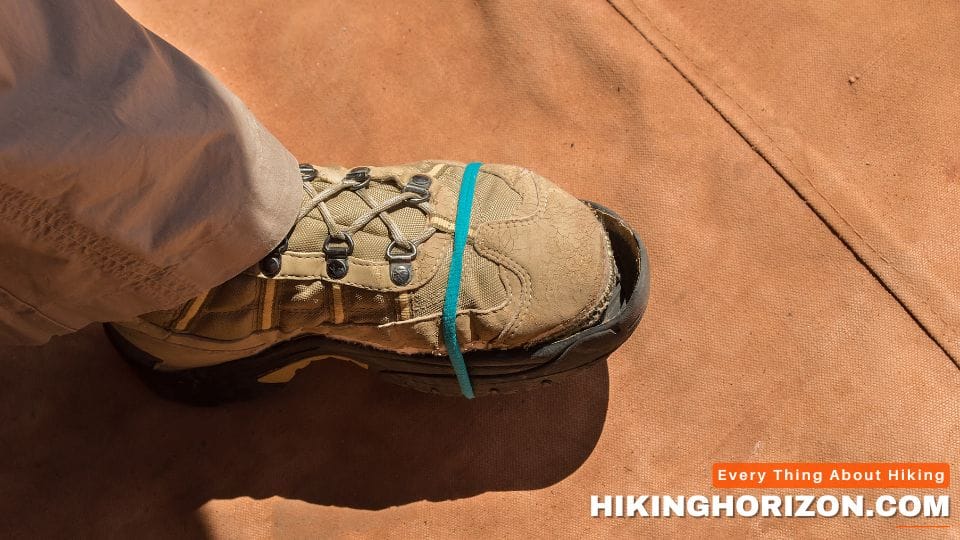
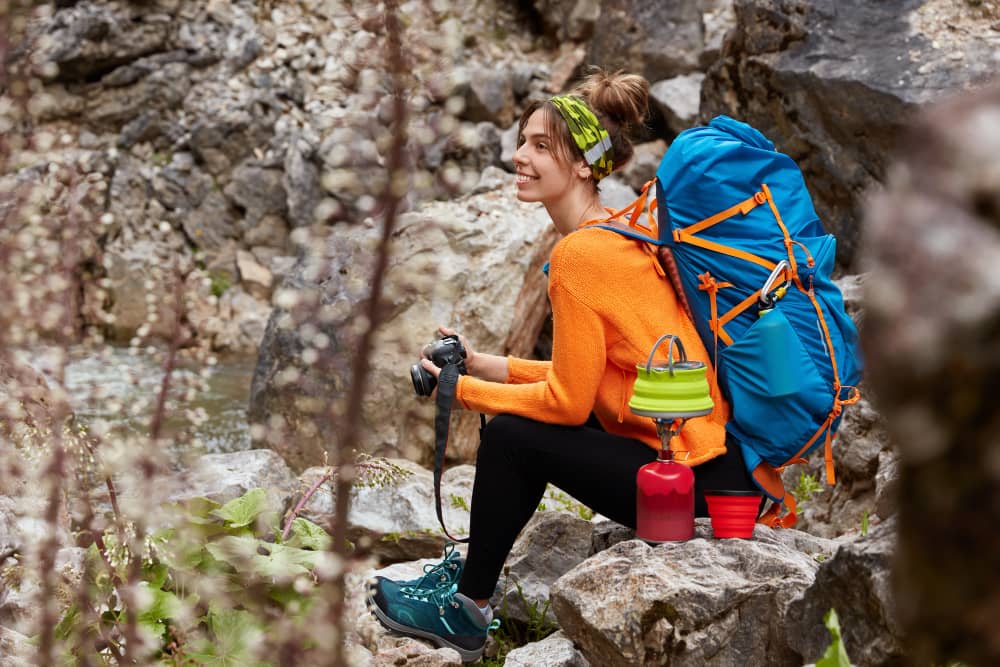
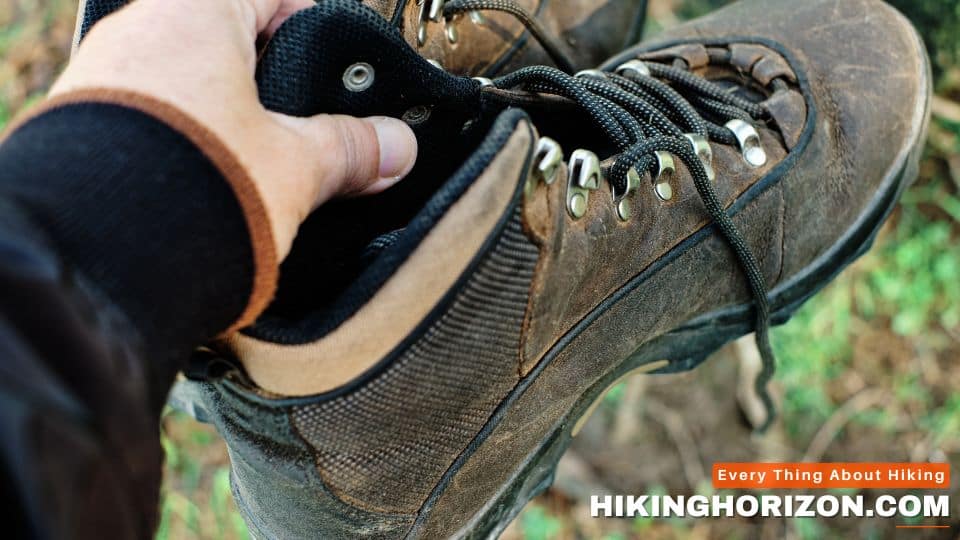
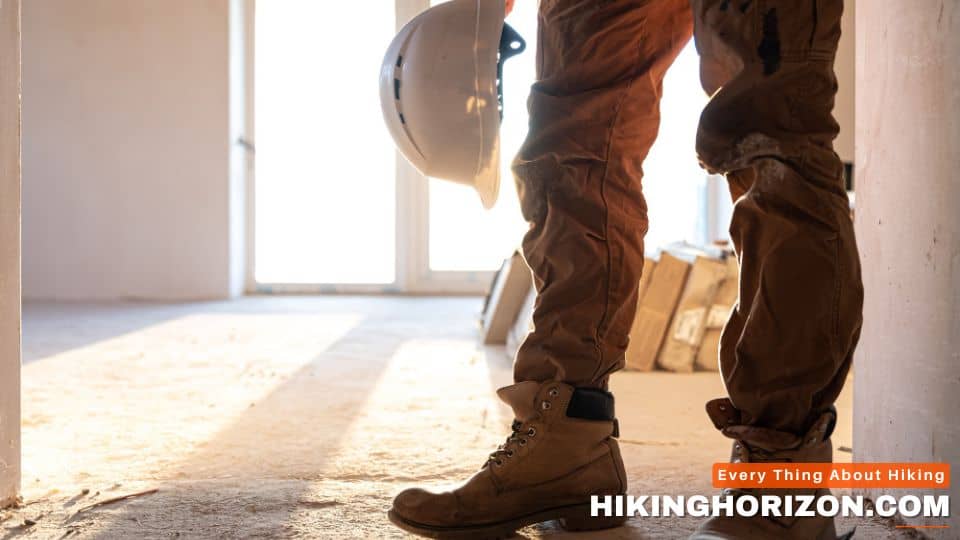
Pingback: Does Hiking Make Your Feet Bigger? Hiking Secrets Revealed
Intriguing article! As an avid hiker who also enjoys staying fit at the gym, I’ve pondered this issue myself. On one hand, hiking shoes provide unparalleled traction and ankle support for uneven terrain. On the other, gym environments demand footwear with enough cushioning for frequent impact.
After rolling my ankles one too many times doing box jumps in my trail runners, I’ve concluded athletic shoes better match my cross-training needs. But there’s certainly a case to be made for versatile hybrid hikers transitioning seamlessly from trail to treadmill. Perhaps the ideal solution differs based on individual factors like fitness level, foot type, injury history, etc.
I appreciate this post exploring the pros and cons since it’s a decision I continue grappling with. Keep providing practical advice for outdoor fitness enthusiasts like myself! Maybe next you could assess temperature regulation for hiking garments indoors versus performance workout gear outdoors.